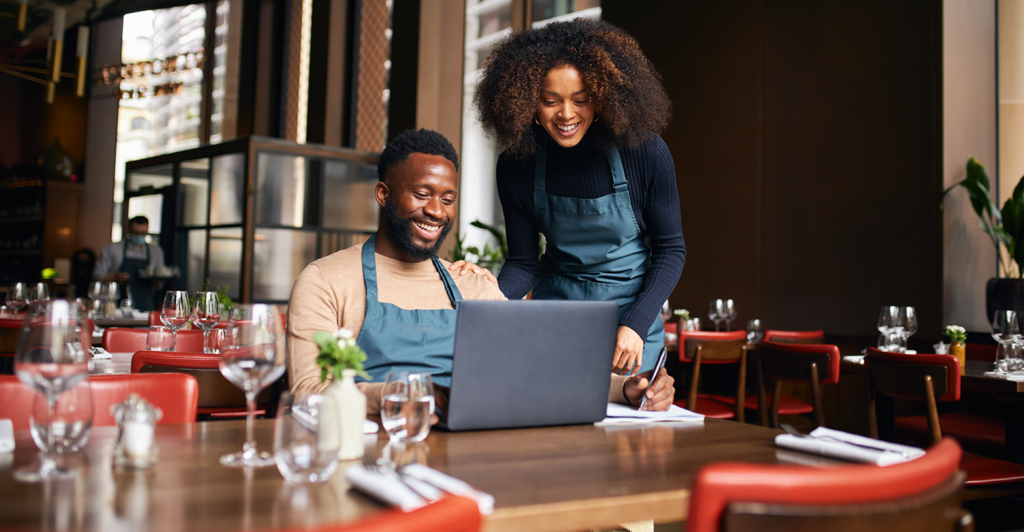Are restaurant websites obsolete?
The standard approach needs to be changed — here’s why
22 August 2023
Share this exclusive content from Saladplate

Photo Credit: SouthWorks/iStock/Getty Images Plus
Ten years ago, the president of a global restaurant brand dropped a bold statement on me: “Restaurant websites will be obsolete soon.” At the time, I confidently argued that he was incorrect in his assessment and supplied strong counterpoints. While I stand by those points to this day, their premises have shifted in small but notable ways. Today, the standard approach to restaurant brand websites is obsolete.
Currently, most restaurant websites are doing a subpar job balancing the marketing and the transactional experiences. Often, the websites are bifurcated into two separate platforms with two separate URLs. Brands have been forced to favor of a marketing and brand messaging-first reality, pushing the transactional to second in hierarchy.
To compound the issue, many restaurant brands stick with the “branded” out-of-the-box user experience where logos, colors, and images are set, but everything else remains in line with the system standard. In this situation, guests encounter an average of eight clicks or taps before placing an order after they’ve clicked through to the transactional site.
It’s easy to see how this current state isn’t ideal. Imagine if you set up eight doors at a brick-and-mortar location, then when the person finally approaches the order counter, you make them go to a different building. An exaggerated example, sure, but not far off.
Every click or tap is an impediment to success. They quickly become frustration points for guests that stack up and compound, leading to drop off. But in today’s digital restaurant reality, impediments to the transactional need-states of the guest are all too common. It’s no wonder preference and affinity have been building with third-party applications where user experiences are seamless and iterated into perfection.
Up until recently, the volume of transactions from restaurant ordering websites weren’t strong enough to warrant investments in a more streamlined approach. With the pandemic came breakneck speed adoption of online ordering as a primary, and now strong secondary, method of acquisition. The aftermath has caused a permanent shift from trend to a permanent behavior. Online ordering, whether through web browser, app, or other device, now commands a sustained notable percentage of sales.
Despite this reality, the technologies for online ordering have been notoriously cumbersome to integrate and customize outside of basic visuals. And we still must endure two restaurant website experiences: one for marketing and brand, and one for commerce and transactions.
It’s time to change that reality.
Deeper customization and integration with the entire restaurant tech stack are more approachable and feasible than ever. No longer do brand leaders have to grapple with the clunkiness of a marketing dot-com experience and a separate transactional experience. In this new age of digital, seamless web experiences open the door to so many opportunities for realizing not only incremental sales, but uplifts in check averages, repeat orders, and loyalty signups, to name a few.
Furthermore, restaurant leaders now have the power of e-commerce retailers and all the optimization and maximization opportunities. Restaurant brands can now take inspiration and ideas from the retail e-commerce like upselling engines, automated email marketing to reduce order abandonment, and post-sale marketing opportunities.
Just have a look at some of the market leaders like Burger King, Sweetgreen, and Papa Johns. These digital experiences are best-in-class and represent the gold standard for what a restaurant experience can and should be. Despite their size, similar systems for smaller restaurant brands are completely attainable. Such was the case for Frank Pepe Pizzeria. In three months, the brand had seen a full return on the initial investment. Sales skyrocketed 30% nearly immediately, and first-party orders jumped 17% to overcome third-party ordering.
To add more to the list of opportunities is the fact that marketing and advertising ROI increases with a strong, fully customizable experience. Imagine spending 5-10% of revenue on marketing that goes to a cumbersome and frustrating experience. Not only are sales lost, but brands create a negative check mark from the guest at the same time. Enough negative marks and that guest is lost to competing brands that offer more intuitive and simple ordering experiences.
A fully immersive, seamless experience is possible, and it doesn’t have to require big brand budgets to realize. Even with a larger investment than the standard brand marketing-only website, seamless experiences have seen large sales increases that lead to measurable return on the investment. The time has come to ditch the out of the box and the standard of bifurcated experience.
If restaurant brands want to continue to grow, they must invest in a better experience for their guests. Websites and associated touchpoints are ripe for realizing a new standard where guests are elated and come back for more.
We are farther away today from restaurant obsolescence than we were years back when that brand president made his bold claim. Not only are restaurant brand websites not obsolete, they represent a renewed frontier ripe for realizing measurable returns, both for the company and the guests alike. What is obsolete is the thinking that today’s two-system realities are good enough to compete. What will become obsolete are the brands who refuse to acknowledge, embrace, and invest in the new frontier.

Source: Nation’s Restaurant News



